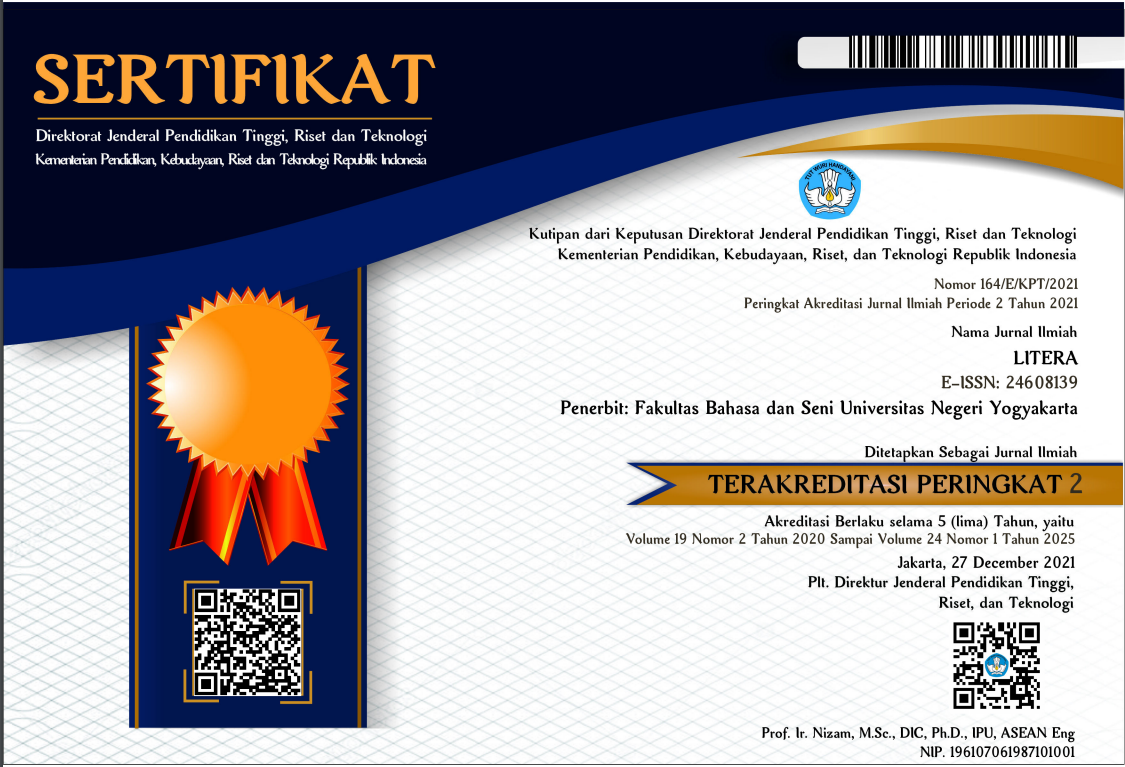KAJIAN Psikolinguistik pa da Ta taran Sintaksis DALAM Basantara Belanda-Indonesia
Vol. 11 No. 2: LITERA OKTOBER 2012
Articles
January 9, 2013
Downloads
Riyanto, S. (2013). KAJIAN Psikolinguistik pa da Ta taran Sintaksis DALAM Basantara Belanda-Indonesia. LITERA, 11(2). https://doi.org/10.21831/ltr.v11i2.1069





















